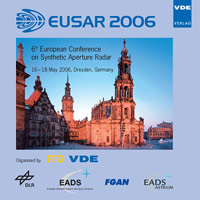Bistatic Airborne / Space Borne Hybrid Experiment: Simulation and Analysis
Conference: EUSAR 2006 - 6th European Conference on Synthetic Aperture Radar
05/16/2006 - 05/18/2006 at Dresden, Germany
Proceedings: EUSAR 2006
Pages: 4Language: englishTyp: PDF
Personal VDE Members are entitled to a 10% discount on this title
Authors:
Gebhardt, Ulrich; Loffeld, Otmar; Nies, Holger; Natroshvili, Koba (Center for Sensor Systems (ZESS) University of Siegen, Paul-Bonatz-Str. 9-11, D-57068 Siegen, Germany)
Ender, Joachim (FGAN-FHR, Neuenahrer Str. 20, D-53343 Wachtberg, Germany)
Abstract:
This paper shows some geometrical aspects of the bistatic hybrid (space borne / airborne) experiment that is planned in cooperation of ZESS (University of Siegen) and FGAN (Forschungsgemeinschaft für angewandte Naturwissenschaften). In this experiment, the TerraSAR-X satellite (to be launched in 2006) is used as SAR transmitter and FGAN’s PAMIR system will work as receiver. Apart from the fact, that this leads to an extreme bistatic constellation, which means a high challenge for the processing, the geometrical setup of the experiment must be described. Antenna steering on the transmitter side as well as on the receiver side must be used to compensate the high difference between the over ground velocities of the carrier platforms.


